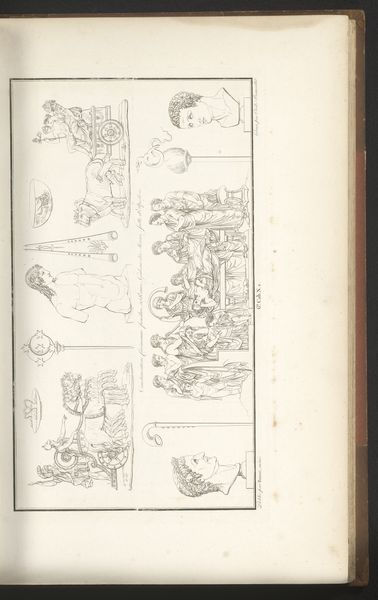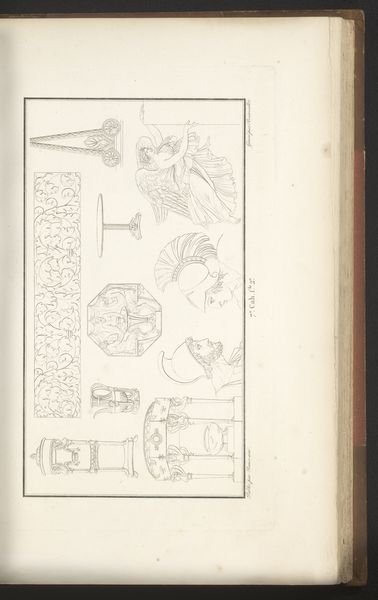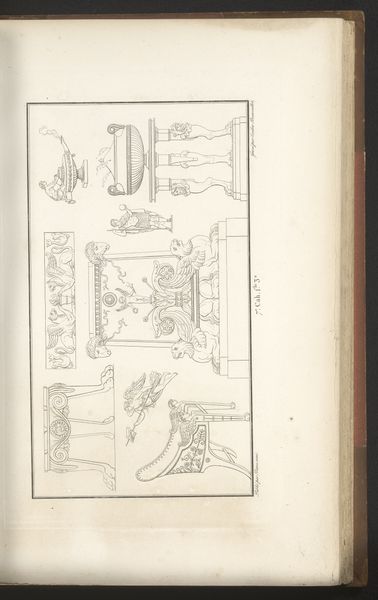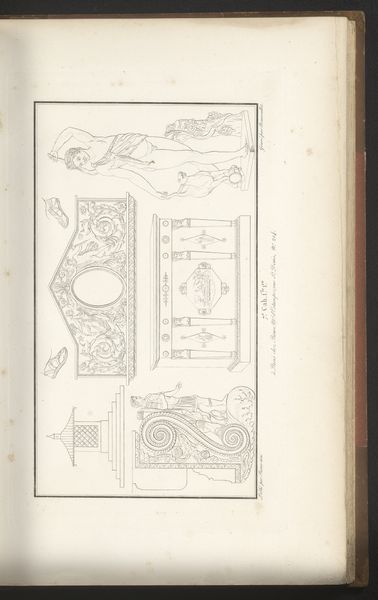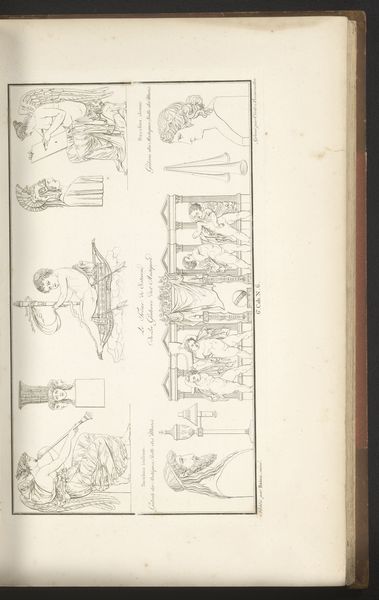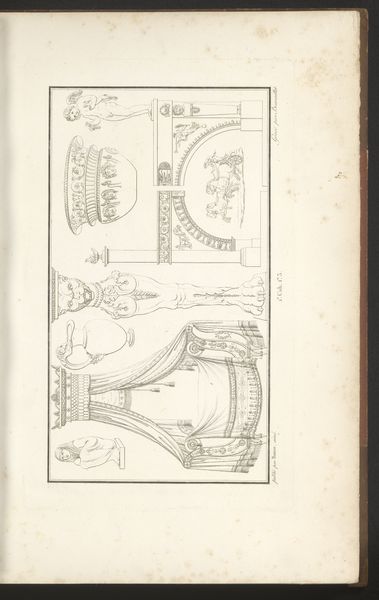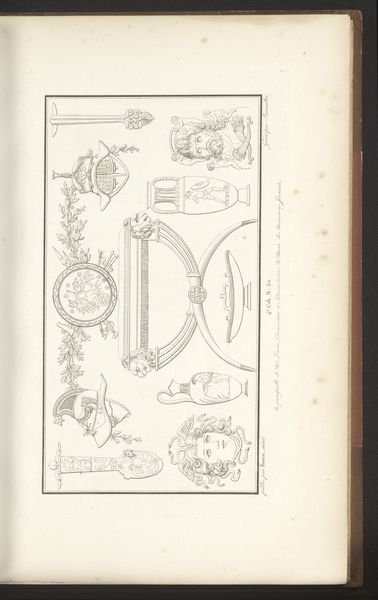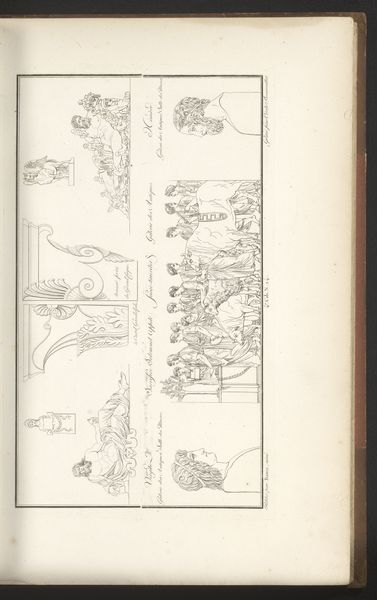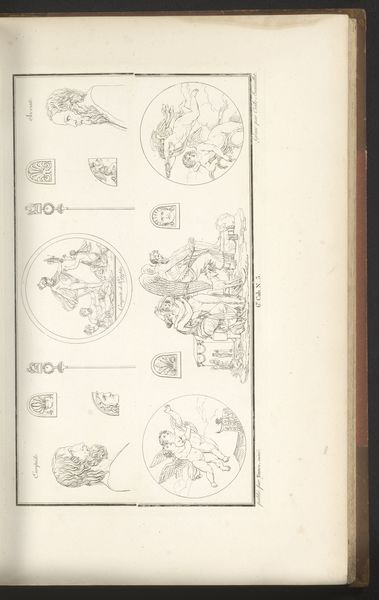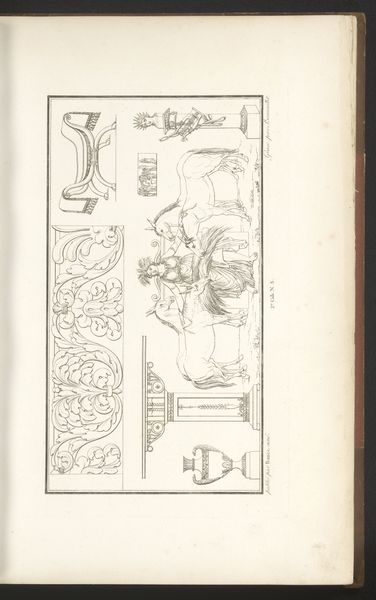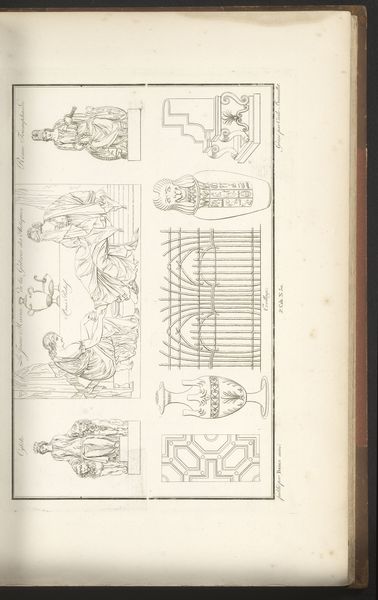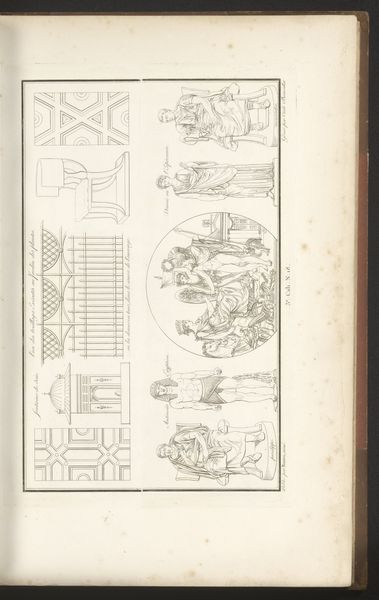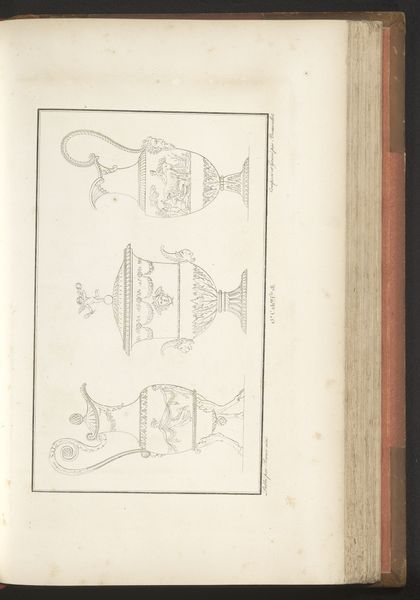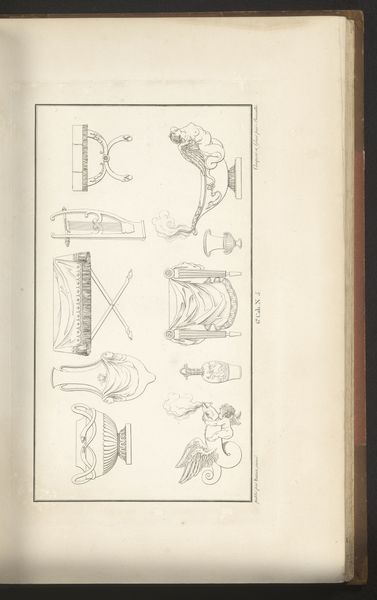
drawing, paper, ink
#
portrait
#
drawing
#
neoclacissism
#
allegory
#
classical-realism
#
figuration
#
paper
#
form
#
ink
#
line
#
academic-art
#
miniature
Dimensions: height mm, width mm
Copyright: Rijks Museum: Open Domain
Editor: This drawing from around 1820, entitled "Relief with Figures, Busts, and Lyre" by Pierre-Nicolas Beauvallet, features various figures and decorative elements rendered in ink on paper. I'm really struck by how academic it feels, almost like a study sheet for neoclassical design. What can you tell me about its historical or material significance? Curator: Look closely at how Beauvallet uses ink and paper. He's not creating a finished "art object" in the traditional sense, is he? This sheet acts more like a record of material culture and the artist’s intellectual engagement with it. What does that suggest to you? Editor: I suppose it downplays the artistic "genius" and highlights the labor of studying and documenting. Curator: Precisely. These drawings challenge that divide between art and craft. He's meticulously reproducing these forms. How might this detailed copying, this emphasis on reproduction, reflect the social and economic context of his time? Think about access to luxury objects or ideas. Editor: Maybe only the wealthy could afford these objects, and the drawings provided a way to disseminate their style more broadly? It becomes almost a commodity in itself. Curator: Exactly. And think about the social function of these idealized forms: Who consumes these images and what ideas do they project? This work speaks less to individual expression and more to the societal systems of taste, consumption, and even class. Editor: I hadn't considered the consumption aspect. It's not just about the beauty; it’s about how that beauty functions within a specific social structure. This focus on materials and context provides a new way of considering neoclassical works. Curator: Absolutely, it allows us to challenge our notions of what is considered 'high art.'
Comments
No comments
Be the first to comment and join the conversation on the ultimate creative platform.
